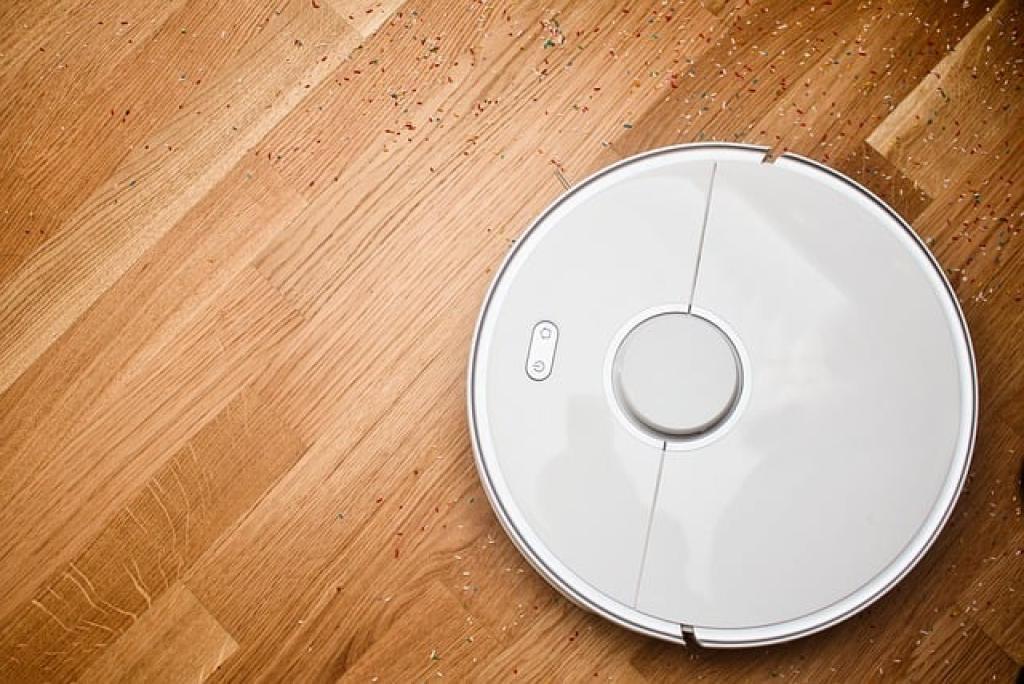In this blog post, we will explore the fascinating world of robot vacuums and their ability to learn your house. Have you ever wondered how these smart devices navigate your home without bumping into furniture or getting stuck? How do they adapt to different floor plans and remember the layout of your house? We will delve into these questions and more, uncovering the technology behind robot vacuums and how they use sensors, mapping algorithms, and machine learning to clean your floors efficiently. So, join us on this journey as we demystify the intelligence behind these automated cleaning companions.
How Do Robot Vacuums Learn Your House?
Robot vacuums use a combination of sensors, cameras, and mapping algorithms to learn the layout of your house. These devices often come equipped with infrared sensors that help them detect walls, furniture, and other obstacles.
By continuously scanning their surroundings, robot vacuums create a virtual map of your home, noting the location of walls, furniture, and other objects. This map allows them to navigate efficiently and avoid collisions.
In addition to physical sensors, robot vacuums may also use cameras or LIDAR (Light Detection and Ranging) sensors to gather more detailed information about their environment. These sensors provide a visual representation of the room, which helps the robot vacuum identify specific objects and navigate more accurately.
Once the robot vacuum has gathered enough data about the layout of your house, it uses sophisticated algorithms to create a cleaning strategy. These algorithms take into account factors such as room size, furniture arrangement, and previous cleaning patterns to determine the most efficient path for cleaning.
Some advanced robot vacuums even have machine learning capabilities. They can analyze the data they collect over time to improve their cleaning performance. By learning from their past cleaning experiences, these devices can adapt to your home’s unique layout and optimize their cleaning routines.
It’s important to note that not all robot vacuums learn in the same way. Different models may use varying combinations of sensors and algorithms to navigate and learn your house. Some may rely more on physical sensors, while others may prioritize visual mapping.
Overall, robot vacuums are designed to learn your house through a combination of sensors, mapping algorithms, and sometimes machine learning. By continuously gathering data and analyzing their surroundings, these devices can become more efficient and effective at cleaning your home over time.
What Technology Allows Robot Vacuums to Map Your Home?
Robot vacuums use a combination of sensors, cameras, and mapping algorithms to learn the layout of your house. These devices create a virtual map of your home by continuously scanning their surroundings and noting the location of walls, furniture, and other objects.
They may also use cameras or LIDAR sensors to gather more detailed information about their environment. The sensors help the robot vacuum detect obstacles and navigate around them. For example, infrared sensors can detect walls and furniture, while cliff sensors prevent the vacuum from falling down stairs or off ledges.
The cameras or LIDAR sensors provide additional information to enhance the mapping capabilities of the robot vacuum. LIDAR, which stands for Light Detection and Ranging, uses laser beams to measure distances and create a detailed 3D map of the surroundings.
With the help of these sensors and cameras, the robot vacuum can gather data about the size and shape of the rooms, the position of furniture, and other objects in the house. This information is then used to create a digital map that the vacuum uses to plan its cleaning routes.
Once the robot vacuum has gathered enough data, it uses sophisticated algorithms to create a cleaning strategy based on factors such as room size, furniture arrangement, and previous cleaning patterns. The algorithms analyze the map and optimize the cleaning path to cover the entire area efficiently.
Some advanced models of robot vacuums even have machine learning capabilities. These models can adapt and optimize their cleaning routines over time based on the data they collect. For example, they can learn which areas of the house require more frequent cleaning and adjust their schedules accordingly.
The machine learning algorithms enable the robot vacuum to improve its performance with each cleaning session. Over time, it can learn the most efficient routes, identify areas that require extra attention, and even recognize when furniture has been moved.
In addition to mapping and cleaning algorithms, robot vacuums also come equipped with other features to enhance their performance. For example, they may have sensors that detect dirt and adjust the cleaning power accordingly, or they may have a self-emptying feature that allows them to empty the dust bin automatically.
Overall, the combination of sensors, cameras, mapping algorithms, and machine learning capabilities allows robot vacuums to effectively learn and map your home, providing efficient and thorough cleaning.

Can Robot Vacuums Adapt to Different Floor Types?
Robot vacuums are designed to adapt to different types of floor surfaces, ensuring effective cleaning across various flooring materials such as hardwood, carpet, tile, and laminate. These devices utilize a combination of sensors and algorithms to detect the type of floor they are on and adjust their cleaning settings accordingly. For example, when transitioning from a hardwood floor to a carpeted area, the robot vacuum may increase its suction power to provide a deeper clean. Conversely, when moving from carpet to hardwood, it may reduce the suction power to avoid damaging the floor. This adaptive feature allows robot vacuums to optimize their cleaning performance on different floor types, ensuring thorough and efficient cleaning throughout your home.
The Bottom Line: Are Robot Vacuums Worth the Investment?
Robot vacuums have gained popularity in recent years, but are they really worth the investment? The answer depends on your specific needs and lifestyle.
If you lead a busy life and struggle to find time for household chores, a robot vacuum can be a game-changer. These automated devices can clean your floors while you focus on other tasks, saving you valuable time and effort.
Moreover, robot vacuums are becoming increasingly intelligent and efficient. They use advanced sensors and algorithms to navigate your home, creating a virtual map that allows them to clean efficiently and avoid obstacles. This means you can trust your robot vacuum to thoroughly clean your floors without constantly supervising it.
Additionally, many robot vacuums offer scheduling features, allowing you to set specific cleaning times. This means you can come home to a clean house every day without lifting a finger.
Furthermore, robot vacuums can adapt to different floor types, adjusting their cleaning settings accordingly. Whether you have hardwood floors, carpets, or a combination of both, these devices can optimize their cleaning performance to suit your needs.
It’s important to note that while robot vacuums can handle regular maintenance cleaning, they may not replace the need for deep cleaning sessions or manual spot cleaning. There may still be instances where you need to use a traditional vacuum or mop for more thorough cleaning.
Another factor to consider is the price range of robot vacuums. While there are budget-friendly options available, more advanced models with additional features can be quite expensive. It’s crucial to assess your budget and determine which features are essential for your cleaning needs.
In conclusion, if you value convenience, time-saving, and efficient floor cleaning, a robot vacuum can be a worthwhile investment. However, it’s essential to consider your specific needs, budget, and the limitations of these devices to make an informed decision.

